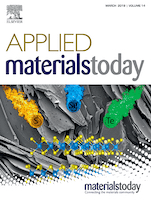
Applied Materials Today
Scope & Guideline
Advancing the Frontiers of Materials Science.
Introduction
Aims and Scopes
- Advanced Material Synthesis:
The journal emphasizes innovative synthesis techniques for a wide range of materials, including nanomaterials, polymers, and metal-organic frameworks (MOFs), often utilizing state-of-the-art methods like 3D printing and electrospinning. - Characterization and Performance Analysis:
Research published in this journal frequently includes detailed characterization of materials to understand their structural, mechanical, thermal, and electrical properties, providing insights into their performance in real-world applications. - Biomedical Applications:
A significant focus is on the development of materials for biomedical applications, including drug delivery systems, tissue engineering scaffolds, and biosensors, highlighting the intersection of materials science and healthcare. - Sustainable and Environmental Solutions:
The journal features studies that explore the use of materials in environmental remediation and energy conversion, such as catalysts for CO2 reduction and water purification systems, addressing pressing global challenges. - Smart and Functional Materials:
Publications often investigate stimuli-responsive materials, including hydrogels and nanocomposites, that can adapt to external conditions, showcasing their potential in smart technology applications.
Trending and Emerging
- Nanomaterials and Nanotechnology:
There is a significant increase in research focused on nanomaterials, particularly their synthesis, functionalization, and application in drug delivery, sensors, and catalysis, reflecting the growing interest in nanoscale innovations. - Metal-Organic Frameworks (MOFs):
The exploration of MOFs has surged, with publications emphasizing their versatility in applications ranging from gas storage and separation to drug delivery systems, highlighting their importance in contemporary materials research. - Biocompatible and Bioactive Materials:
Emerging themes include the development of biocompatible materials for medical applications, such as regenerative medicine and targeted drug delivery systems, addressing the increasing demand for materials that support health and healing. - Smart and Adaptive Materials:
Research is trending towards smart materials that respond to environmental stimuli, such as temperature and pH changes, which have applications in sensors, drug delivery, and other interactive technologies. - Sustainable and Green Chemistry:
There is a notable shift towards sustainable practices in materials development, including the use of bio-based materials, recycling approaches, and eco-friendly synthesis methods, reflecting a broader societal push for sustainability.
Declining or Waning
- Conventional Bulk Materials:
Research focusing solely on traditional bulk materials without innovative modifications or applications appears to be less frequent, as the journal shifts towards more advanced and functionalized material systems. - Single-Use Materials:
There seems to be a waning interest in research centered around single-use materials, as the emphasis increasingly shifts towards sustainable and recyclable materials that contribute to environmental conservation. - Basic Characterization Techniques:
Papers solely dedicated to basic characterization methods (e.g., simple mechanical testing) are becoming less common, with a preference for advanced and multi-faceted characterization approaches that provide deeper insights into material performance.
Similar Journals

Materials Advances
Pioneering Breakthroughs in Open Access ScienceMaterials Advances, published by the Royal Society of Chemistry, serves as a premier open-access journal dedicated to the dynamic field of materials science and chemistry. Since its inception in 2020, the journal has quickly gained recognition, achieving an impressive Q1 ranking in both the Chemistry (miscellaneous) and Materials Science (miscellaneous) categories as of 2023. With an impact factor reflective of its high academic standards, it ranks #18 out of 111 in Chemistry and #107 out of 463 in General Materials Science per Scopus metrics. The journal welcomes research articles that explore innovative materials, advanced synthesis techniques, and novel applications, thereby contributing to the ongoing dialogue in materials research. Operating under an open access model, Materials Advances ensures that groundbreaking research is freely available to a global audience, facilitating collaboration and advancements in science. With its headquarters in Cambridge, England, this journal is positioned at the forefront of technological research and discovery, making it a vital resource for researchers, professionals, and students alike.
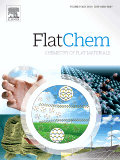
FlatChem
Empowering the Scientific Community with High-Quality ResearchFlatChem, an esteemed journal published by ELSEVIER, serves as a premier platform for disseminating high-quality research in the dynamic fields of ceramic and composite materials, electronic and optical materials, materials chemistry, and surfaces, coatings, and films. Since its inception in 2017, the journal has garnered a robust reputation, evidenced by its rank in the top quartile (Q1) across multiple categories, including a commendable rank of #25/127 in Ceramics and Composites and #49/284 in Electronic, Optical and Magnetic Materials. With a focus on pioneering advancements and innovative methodologies, FlatChem not only highlights cutting-edge research but also promotes collaboration and knowledge exchange within the scientific community. The journal’s impact is underscored by its impressive rankings in Scopus, marking it as a vital resource for researchers, professionals, and students aiming to stay at the forefront of materials science. As an open-access journal, it ensures that groundbreaking findings are readily accessible, fostering a broader understanding and application of materials innovation worldwide. The journal is based in the Netherlands, with its headquarters located at RADARWEG 29, 1043 NX AMSTERDAM, NETHERLANDS. Join the vibrant community contributing to FlatChem and engage with the forefront of material advancements.
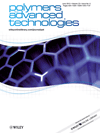
POLYMERS FOR ADVANCED TECHNOLOGIES
Shaping the Future with Advanced Polymer InsightsPOLYMERS FOR ADVANCED TECHNOLOGIES is a premier peer-reviewed journal published by WILEY, focusing on cutting-edge research in the field of polymers and plastics. Since its inception in 1990, the journal has established itself as a critical resource for academics and industry professionals alike, reflecting advancements and innovations in polymer science and technology. With an impressive Scopus ranking of #45 out of 161 in the Materials Science category and a 72nd percentile ranking, it ranks in the Q2 quartile for its relevance and impact within the polymers field. The journal's comprehensive scope encompasses recent developments and trends in polymer applications, synthesis, and characterization, making it essential reading for researchers looking to advance their work within this dynamic area. Researchers can submit their work in the UK, where the journal is published, and while it does not currently offer open-access options, its robust impact factor highlights the significance of the research it disseminates. Join the community of experts pushing the boundaries of polymer science by engaging with POLYMERS FOR ADVANCED TECHNOLOGIES. Continuous exploration and innovation await those who contribute to and learn from the journal’s diverse array of studies.

BULLETIN OF MATERIALS SCIENCE
Exploring Innovations in Material MechanicsBulletin of Materials Science, published by the Indian Academy of Sciences, is a distinguished journal that has been contributing to the field of materials science since its inception in 1979. With an ISSN of 0250-4707 and E-ISSN 0973-7669, it provides a platform for researchers to share groundbreaking studies and advancements in the mechanics of materials and general materials science. As of 2023, the journal holds a respectable Q3 ranking in both the Materials Science (miscellaneous) and Mechanics of Materials categories, highlighting its competitive position in the academic landscape. Although the journal currently does not operate under an open access model, it remains a vital resource for professionals and students keen on exploring innovative material developments and methodologies. With a commitment to promoting high-quality research, the Bulletin of Materials Science features rigorous peer-review processes, making it an essential reference for anyone engaged in the materials science domain.

MRS Advances
Empowering Research Through Rigorous Peer ReviewMRS Advances, published by Springer Heidelberg, is an esteemed academic journal that serves as a vital platform for disseminating cutting-edge research in the fields of condensed matter physics, materials science, and mechanical engineering. With an ISSN of 2731-5894 and an E-ISSN of 2059-8521, the journal is hosted in Switzerland and encompasses an impressive spectrum of innovative studies that impact both theoretical and practical applications. Throughout its converged years from 2012 and continuing through 2024, MRS Advances has established itself with notable rankings, including Q4 in condensed matter physics and Q3 in several related categories. This journal not only enriches the academic community with its rigorous peer-reviewed articles, but also encourages open discussions that further advance research innovations. Although currently not designated as an open-access journal, its accessibility through institutional subscriptions ensures that professionals, researchers, and students can engage with the latest advancements in the material science arena. Emphasizing its relevance, MRS Advances is dedicated to fostering interdisciplinary collaboration and inspiring new discoveries within the global research community.

SmartMat
Bridging Chemistry and Mechanics for Tomorrow's Solutions.SmartMat is a cutting-edge, peer-reviewed academic journal published by WILEY, dedicated to the fields of Chemistry, Materials Science, and Mechanics of Materials. Launched in 2020, this Open Access journal aims to disseminate high-quality research and innovative findings that bridge these interdisciplinary areas. With an impressive impact factor reflecting its strong scholarly influence, SmartMat currently holds the prestigious Q1 category ranking in key domains such as Chemistry (miscellaneous), Materials Science (miscellaneous), and Mechanics of Materials, underscoring its relevance and importance in advancing material research. The journal is ranked among the top in its fields on Scopus, with 98th and 97th percentiles for Engineering and Chemistry rankings, respectively. Researchers, professionals, and students looking for a platform to share advancements in smart materials and their applications are encouraged to explore the wide-ranging access options available, enhancing visibility and engagement with global scientific communities.
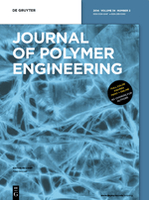
JOURNAL OF POLYMER ENGINEERING
Exploring the Boundaries of Materials Chemistry.JOURNAL OF POLYMER ENGINEERING, published by Walter de Gruyter GmbH, stands as a pivotal platform in the field of polymer science and engineering. With an ISSN of 0334-6447 and an E-ISSN of 2191-0340, this journal has been a vital contributor to the academic landscape since its inception, spanning publications from 1981 to 2024. As a recognized entity in the realms of Chemical Engineering, Materials Chemistry, and Polymers and Plastics, it holds a respectable position in Q3 quartile rankings according to the latest assessments. The journal is positioned to promote the exchange of cutting-edge research findings, technological advancements, and critical reviews that address the complexities of polymer application and innovation. Researchers and professionals will find a wealth of information, from experimental methodologies to theoretical analyses, all designed to inspire and elevate the current understanding of polymer engineering. By fostering collaboration and dissemination of knowledge, the JOURNAL OF POLYMER ENGINEERING remains crucial for advancing research and education in its specialized domains.

MATERIALS LETTERS
Delivering concise discoveries in materials science.MATERIALS LETTERS, published by ELSEVIER, is a premier journal dedicated to the rapid dissemination of significant advances in the field of materials science and engineering. With an impressive impact factor and a solid reputation reflected in its ranking within the Q2 quartile of various categories such as Condensed Matter Physics, Materials Science, Mechanical Engineering, and Mechanics of Materials, it provides a platform for researchers, professionals, and students to share focused and innovative research findings from 1982 to the present. Despite being a subscription-based journal, its accessibility through institutional and personal subscriptions ensures a wide reach in the academic community. By presenting concise reports, the journal aims to bridge the gap between fundamental research and practical applications, highlighting the critical role of materials in technological advancement. The journal's ISSN is 0167-577X and the E-ISSN is 1873-4979. For researchers looking to publish their work or follow the latest trends in materials science, MATERIALS LETTERS stands as an essential resource, contributing significantly to the discourse in this dynamic field.
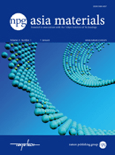
NPG Asia Materials
Pioneering Insights for a Material WorldNPG Asia Materials, a premier journal published by NATURE PORTFOLIO, stands at the forefront of research in the fields of condensed matter physics, materials science, and modeling and simulation. With an impressive Impact Factor gracing its Q1 rankings in 2023, this open-access journal, established in 2012, offers a vital platform for disseminating high-quality research articles, reviews, and perspectives that advance the understanding of material properties and innovative applications. Based in the United States and catering to a global audience, NPG Asia Materials features cutting-edge contributions that not only enhance academic scholarship but also provoke discussions relevant to both industry and academia. Researchers, professionals, and students are invited to explore its extensive archive of work, covering insights from 2009 to 2024, in a bid to stay abreast of the latest developments in these rapidly evolving scientific domains.

Polymer-Plastics Technology and Materials
Pioneering Research in Materials ChemistryPolymer-Plastics Technology and Materials is a premier academic journal published by Taylor & Francis Inc., dedicated to the dynamic fields of chemical engineering, materials chemistry, and polymers and plastics. With an impact factor that reinforces its reputation, this journal is strategically indexed in Scopus, ranked notably within its categories (Q2), showcasing its influence and relevance in the academic community. Since its inception in 2019, the journal has served as an essential platform for researchers, professionals, and students to disseminate innovative studies and advancements in polymer science and materials technology. As an Open Access publication, it ensures that cutting-edge research is accessible to a global audience, fostering collaboration and knowledge sharing in the material sciences. Located in the United Kingdom, Polymer-Plastics Technology and Materials continues to enhance the dialogue within the industry, addressing critical challenges and exploring emerging trends that shape the future of polymer and plastics technologies.